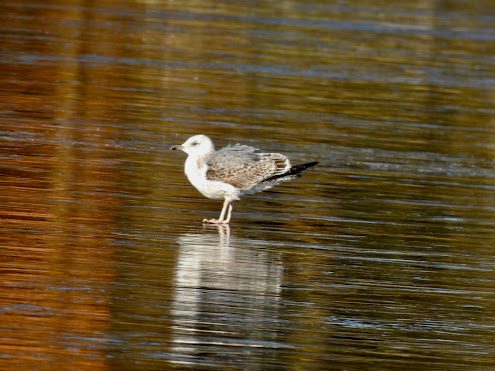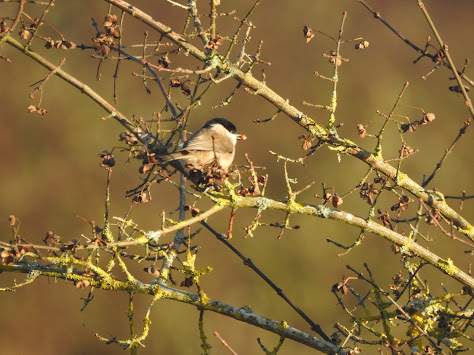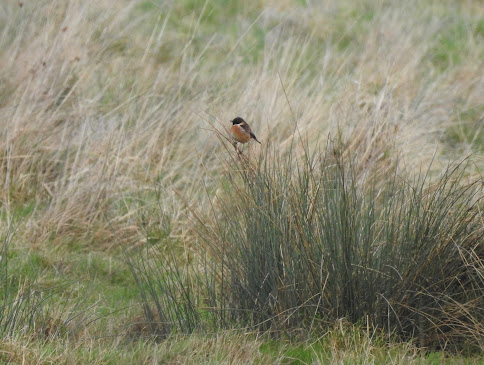I have to admit that it has been irking me slightly that a number of observers have turned up mid-afternoon this January and been treated to views of the resident Barn Owl, while my morning shifts have produced no sign of it.
The answer was obviously to change my schedule, and it just so happened that today was ideal. Right on cue, just before 15.00, I spotted it hunting and got a pretty rubbish record shot.
 |
| Barn Owl refusing to look round |
Shortly after I took this shot it took off and I decided to leave to hunt undisturbed.
The afternoon had more to offer anyway. You may recall the Early Moth I photographed at Morrisons in Redditch. Well this time I came across a wing of the same species. Suspecting Early Moth I checked it on Obsidentify, and it said 100% Early Moth (strictly speaking a late Early Moth). I then dropped the wing which floated off in the breeze and I couldn't refind it. So no photo.
The pair of Stonechats at the scrape field turned out to include a colour-ringed male. It's origin is under investigation.
 |
| Colour-ringed Stonechat |
Down at the flash field I came across four (two pairs) of Wigeon, perhaps some of the birds seen at Arrow Valley lake last week.
 |
| Three Wigeon, some Teal and a Lapwing |
The Lapwing flock stood at 59 at least, and I counted 31 Teal.
Finally, on my return stroll I spotted a Peregrine on the pylons, my first of the year.
 |
| Peregrine |
A very successful visit.



















%20near%20Lower%20Bentley.jpeg)


